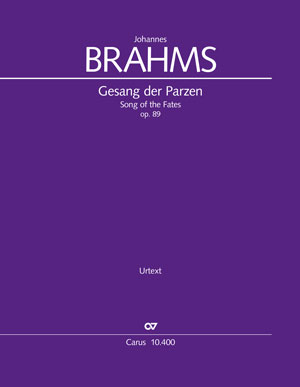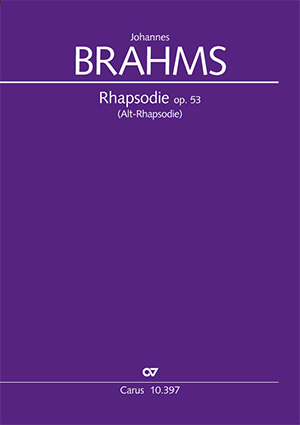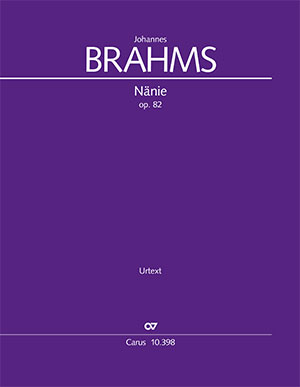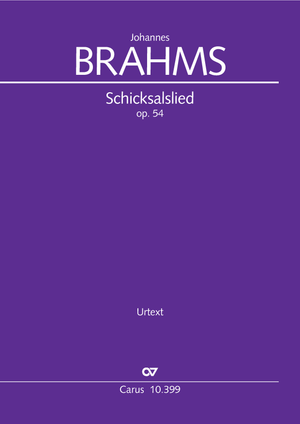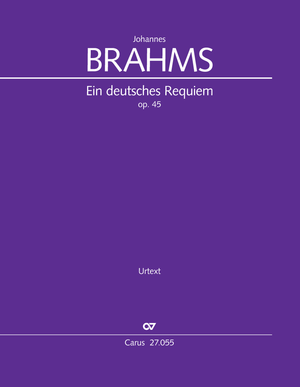Song of the Fates
op. 89, 1882
The Three Fates, or Parcae, were the goddesses of fate in Greek-Roman mythology, and sang on themes of curse and fate. The "Parzenlied" in Goethe’s verse drama “Iphigenie auf Tauris” is concerned with these themes and became the model for Johannes Brahms’s setting. His Gesang der Parzen (Song of the Fates) op. 89 describes in thrilling, eruptive sounds the fight to overcome the mythical curse through the purity of truthful, noble actions and the power of hope.
With a duration of around 12 minutes, the work can be combined with Brahms’s German Requiem in concert.
With a duration of around 12 minutes, the work can be combined with Brahms’s German Requiem in concert.
Purchase
Additional product information
-
Composer
Johannes Brahms
| 1833-1897Johannes Brahms' study of musical tradition was of crucial importance to his output: he combined church modes, canonic technique, Baroque style and diction, Bach's counterpoint and Beethoven's thematic-motivic work with the harmonic and expressive achievements of Romanticism to form his own distinctive style. In this respect his choral songs and vocal quartets (e.g. the “Liebeslieder Waltzes” and “New Liebeslieder Waltzes”), often to folk song texts, in which a musical microcosm unfolds, are examplary. His “Deutsches Requiem”, available from Carus in several different versions, constitutes one of the most fascinating confessions of faith in the history of music. Personal details
-
Editor
Rainer Boss
-
Songwriter / Librettist
Johann Wolfgang Goethe
-
Vocal score arranger
Sven Hiemke
-
Translator
Natalia MacFarren
Frequent questions about this work
 There are no questions and answers available so far or you were unable to find an answer to your specific question about this work? Then click here and send your specific questions to our Customer Services!
There are no questions and answers available so far or you were unable to find an answer to your specific question about this work? Then click here and send your specific questions to our Customer Services!


